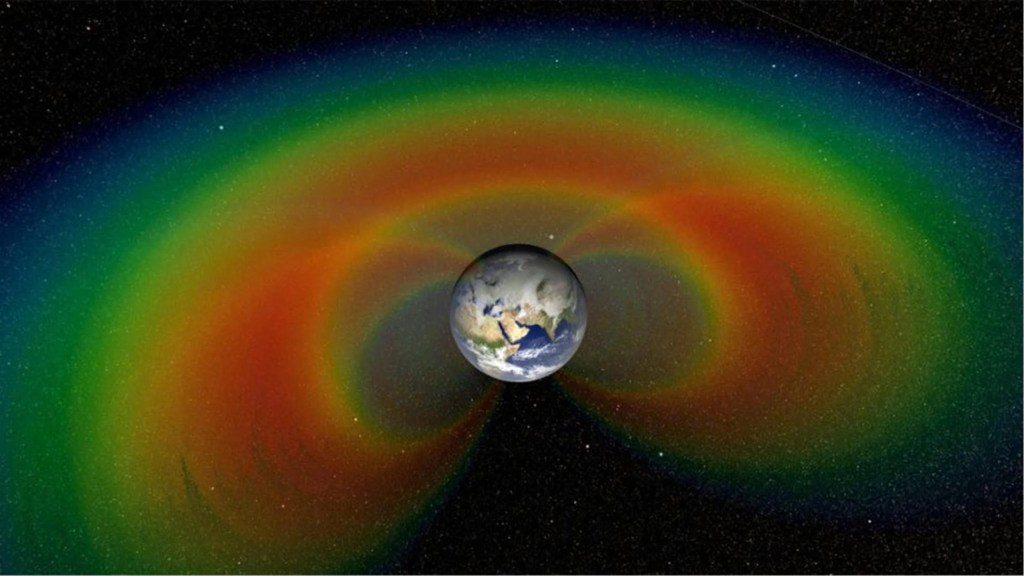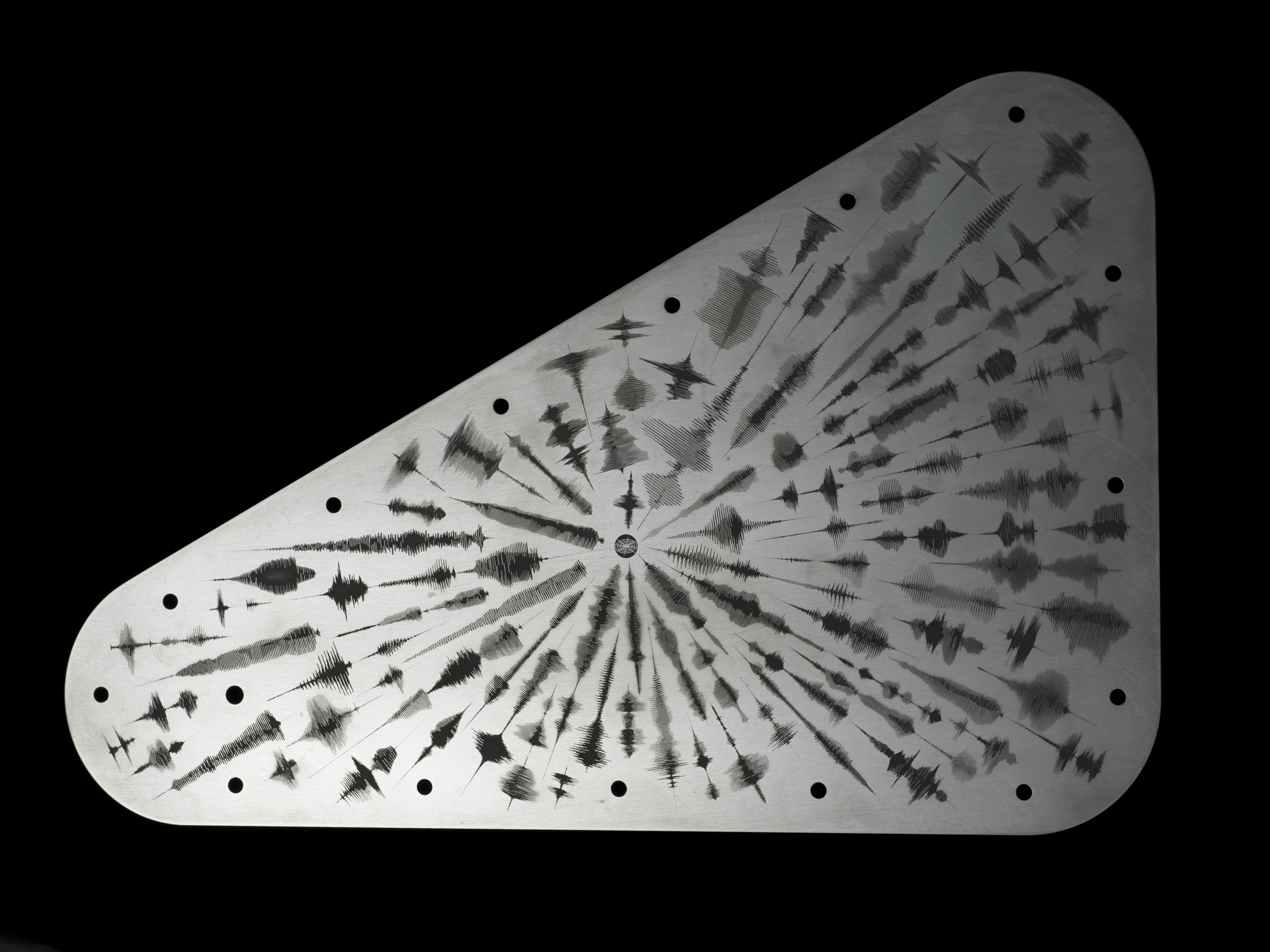Innovative Instrument Reveals Hidden Features Deep Inside the Van Allen Radiation Belts
A new instrument is using advanced detection techniques and leveraging an orbit with specific characteristics to increase our understanding of the Van Allen belts—regions surrounding Earth that contain energetic particles that can endanger both robotic and human space missions. Recently, the instrument provided a unique view of changes to this region that were brought on […]


A new instrument is using advanced detection techniques and leveraging an orbit with specific characteristics to increase our understanding of the Van Allen belts—regions surrounding Earth that contain energetic particles that can endanger both robotic and human space missions. Recently, the instrument provided a unique view of changes to this region that were brought on by an intense magnetic storm in May 2024.
The discovery of the Van Allen radiation belts by the U.S. Explorer 1 mission in 1958 marked a prominent milestone in space physics and demonstrated that Earth’s magnetosphere efficiently accelerates and traps energetic particles. The inner belt contains protons in the MeV (million electric volt) to GeV (109 electric volt) range, and even higher concentrations of energetic electrons of 100s of keV (1000 electric volt) to MeV are found in both the inner belt and the outer belt.
The energetic electrons in these belts—also referred to as “killer electrons”—can have detrimental effects on spacecraft subsystems and are harmful to astronauts performing extravehicular activities. Understanding the source, loss, and varying concentrations of these electrons has been a longstanding research objective. High-energy resolution and clean measurements of these energetic electrons in space are required to further our understanding of their properties and enable more reliable prediction of their intensity.
Overcoming the challenges of measuring relativistic electrons in the inner belt
Measuring energetic electrons cleanly and accurately has been a challenge, especially in the inner belt, where MeV to GeV energy protons also exist. NASA’s Van Allen Probes, which operated from 2012 to 2019 in low inclination, geo-transfer-like orbits, showed that instruments traversing the heart of the inner radiation belt are subject to penetration by the highly energetic protons located in that region. The Relativistic Electron Proton Telescope (REPT) and the Magnetic Electron and Ion Spectrometer (MagEIS) instruments onboard the Van Allen Probes were heavily shielded but were still subject to inner-belt proton contamination.
To attempt to minimize these negative effects, a University of Colorado Boulder team led by Dr. Xinlin Li, designed the Relativistic Electron Proton Telescope integrated little experiment (REPTile)—a simplified and miniaturized version of REPT—to fly onboard the Colorado Student Space Weather Experiment (CSSWE). An effort supported by the National Science Foundation, the 3-Unit CSSWE CubeSat operated in a highly inclined low Earth orbit (LEO) from 2012 to 2014. In this highly inclined orbit, the spacecraft and the instruments it carried were only exposed to the inner-belt protons in the South Atlantic Anomaly (SAA) region where the Earth’s magnetic field is weaker, which greatly reduced the time that protons impacted the measurement of electrons.
REPTile’s success motivated a team, also led by Dr. Xinlin Li, to design REPTile-2—an advanced version of REPTile—to be hosted on the Colorado Inner Radiation Belt Experiment (CIRBE) mission. Like CSSWE, CIRBE operates in a highly inclined low-Earth orbit to ensure the exposure to damaging inner-belt protons is minimized. The team based the REPTile-2 design on REPTile but incorporated two additional technologies—guard rings and Pulse Height Analysis—to enable clean, high-energy-resolution measurements of energetic electrons, especially in the inner belt.
As shown on the left in Figure 3, the field of view (FOV) of REPTile-2 is 51o. Electrons and protons enter the FOV and are measured when they reach a stack of silicon detectors where they deposit their energies. However, very energetic protons (energy greater than 60 MeV) could penetrate through the instrument’s tungsten and aluminum shielding and masquerade as valid particles, thus contaminating the intended measurements. To mitigate this contamination, the team designed guard rings that surround each detector. These guard rings are electronically separated from the inner active area of each detector and are connected by a separate electric channel. When the guard rings are triggered (i.e., hit by particles coming outside of the FOV), the coincident measurements are considered invalid and are discarded. This anti-coincidence technique enables cleaner measurements of particles coming through the FOV.

To achieve high energy resolution, the team also applied full Pulse Height Analysis (PHA) on REPTile-2. In PHA, the magnitude of measured charge in the detector is directly proportional to the energy deposited from the incident electrons. Unlike REPTile, which employed a simpler energy threshold discrimination method yielding three channels for the electrons, REPTile-2 offers enhanced precision with 60 energy channels for electron energies ranging from 0.25 – 6 MeV. The REPT instrument onboard the Van Allen Probes also employed PHA but while REPT worked very well in the outer belt, yielding fine energy resolution, it did not function as well in the inner belt since the instrument was fully exposed to penetrating energetic protons because it did not have the guard rings implemented.

CIRBE and REPTile-2 Results
CIRBE’s launch, secured through the NASA CubeSat Launch Initiative (CSLI), took place aboard SpaceX’s Falcon 9 rocket as part of the Transporter-7 mission on April 15, 2023. REPTile-2, activated on April 19, 2023, has been performing well, delivering valuable data about Earth’s radiation belt electrons. Many features of the energetic electrons in the Van Allen belts have been revealed for the first time, thanks to the high-resolution energy and time measurements REPTile-2 has provided.
Figure 5 shows a sample of CIRBE/REPTile-2 measurements from April 2024, and illustrates the intricate drift echoes or “zebra stripes” of energetic electrons, swirling around Earth in distinct bunches. These observations span a vast range across the inner and outer belts, encompassing a wide spectrum of energies and electron fluxes extending over six orders of magnitude. By leveraging advanced guard rings, Pulse Height Analysis (PHA), and a highly inclined LEO orbit, REPTile-2 is delivering unprecedented observations of radiation belt electrons.

In fact, the team recently announced that measurements from CIRBE/REPTile-2 have revealed a new temporary third radiation belt composed of electrons and sandwiched between the two permanent belts. This belt formed during the magnetic storm in May 2024, which was the largest in two decades. While such temporary belts have been seen after big storms previously, the data from CIRBE/REPTile-2 are providing a new viewpoint with higher energy resolution data than before. Scientists are currently studying the data to better understand the belt and how long it might stick around — which could be many months.
PROJECT LEAD
Dr. Xinlin Li, University of Colorado Laboratory for Atmospheric and Space Physics and Department of Aerospace Engineering Sciences.
SPONSORING ORGANIZATIONS
Heliophysics Flight Opportunities for Research & Technology (H-FORT) program, National Science Foundation
Share
Details
Related Terms
What's Your Reaction?



















.jpg?#)





































